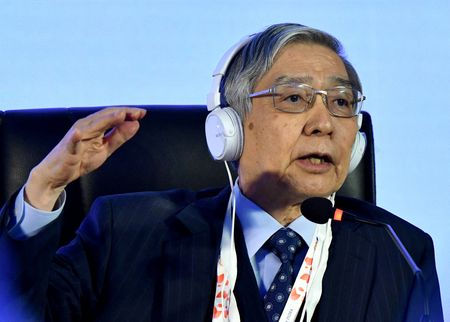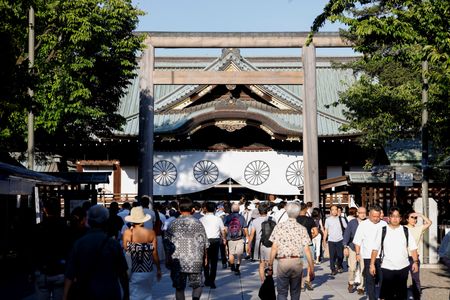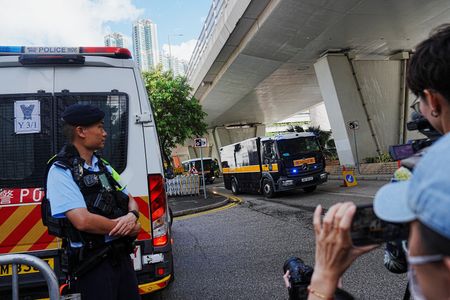By Tetsushi Kajimoto and Leika Kihara
TOKYO (Reuters) – Bank of Japan (BOJ) Governor Haruhiko Kuroda, who retires on April 8, leaves behind a mixed legacy with a massive monetary stimulus that helped create jobs and boost asset prices, but failed to durably achieve its 2% inflation target.
Hand-picked by former premier Shinzo Abe to pull Japan out of deflation, Kuroda deployed in April 2013 a huge asset-buying programme with a pledge to fire up inflation to the BOJ’s 2% target in roughly two years.
After the target failed and its huge bond buying began to dry up market liquidity, the BOJ shifted in 2016 to a policy targeting interest rates rather than the pace of money printing.
Under the policy, dubbed yield curve control (YCC), the central bank applies a negative rate on short-term interest rates and pegs the 10-year bond yield around zero.
Below is a scorecard on the pros and cons of Kuroda’s monetary experiment:
STOCK MARKET RISES AS YEN WEAKENS
Analysts say one of the key benefits of Kuroda’s “bazooka” asset-buying programme was to reverse a debilitating yen spike that had hurt Japan’s export-reliant economy.
The yen’s decline helped boost business sentiment and led to a rise in stock prices. Compared with the time he assumed the post, the yen is down around 30% against the dollar.
But the yen’s fall to a 32-year low near 152 to the dollar last year has drawn complaints from the public for pushing up the cost of raw material imports and the cost of living.
GRAPHIC: How the Yen has moved, https://www.reuters.com/graphics/JAPAN-ECONOMY/BOJ-KURODA(FACTBOX)/gdpzqnyogvw/chart.png
Stock prices got a boost from Kuroda’s stimulus. The Nikkei average is now around 28,000, more than double the level seen when Kuroda assumed the post in 2013.
BOOST TO JOBS AND ECONOMIC GROWTH
Kuroda has repeatedly said his monetary stimulus helped create more than 4 million jobs during his tenure and end Japan’s prolonged economic stagnation that made it hard for new graduates to land jobs.
Japan’s unemployment rate hit 2.6% in February, close to a 26-year low of 2.2% hit in 2018 and down from 4.1% in March 2013. The number of people employed grew to 67 million as of February, up 6% from 2013.
GRAPHIC: Japan jobless rate, https://www.reuters.com/graphics/JAPAN-ECONOMY/BOJ-KURODA/klpygqxlapg/chart.png
Japan’s nominal gross domestic product (GDP) expanded to 560 trillion yen in the December quarter, up from 502 trillion yen at the start of 2013, though real GDP growth was mostly stagnant when excluding booms and busts caused by the sales tax hikes and the coronavirus pandemic.
GRAPHIC: Japan real GDP, https://www.reuters.com/graphics/JAPAN-ECONOMY/BOJ-KURODA/lgvdkjrgzpo/chart.png
INFLATION SCORE MIXED
Kuroda’s 2% inflation target remained elusive during his decade-long helm. When he took office in 2013, Japan was still suffering from moderate price declines. Core consumer inflation began to accelerate and hit 1.3% later that year, before crawling back to near zero in 2015.
Rising global commodity costs blamed on Russia’s invasion of Ukraine pushed Japan’s core consumer inflation to a 41-year high of 4.2% in January.
Kuroda and many analysts expect inflation to slow back below the BOJ’s 2% target later this year as cost-push factors such as fuel dissipate.
GRAPHIC:Japan’s inflation problem, https://www.reuters.com/graphics/JAPAN-ECONOMY/BOJ-KURODA/jnvwyleddvw/chart.png
WAGE GROWTH TEPID
Despite a tight labour market, wages barely rose during Kuroda’s term even as big manufacturers reaped record profits thanks to the weak yen his bazooka delivered.
Big firms have agreed to wage hikes in this year’s spring wage negotiations with unions, heightening prospects for higher pay that will give households more money to spend.
But inflation-adjusted real wages, a barometer of households’ purchasing power, fell 4.1% in January from a year earlier, marking the 10th straigth month of declines, a sign pay isn’t rising enough to compensate households for the rising cost of living.
GRAPHIC: Inflation taking bite out of pay, https://www.reuters.com/graphics/JAPAN-ECONOMY/BOJ-KURODA(FACTBOX)/lgvdkxwywpo/chart.png
HUGE BALANCE SHEET
Under Kuroda’s stimulus policy, the BOJ continued to ramp up asset buying. While the BOJ began stealth tapering its purchases since shifting to yield curve control, it is saddled with a balance sheet 1.3 times the size of Japan’s economy.
With its economy fragile and inflation below that of other advanced economies, many analysts expect the BOJ to hold off on resorting to quantitative tightening (QT) for years to come.
GRAPHIC: Inflation taking bite out of pay, https://www.reuters.com/graphics/JAPAN-ECONOMY/BOJ-KURODA(FACTBOX)/lgvdkxwywpo/chart.png
(Reporting by Tetsushi Kajimoto and Leika Kihara; Editing by Sam Holmes)










